TOLEDO, Ohio — If you're experiencing sneezing, coughing, congestion, itchy eyes and a runny nose due to seasonal allergies, you're not alone. As the spring season continues and plants grow, pollen acts as an irritant to those who are sensitive to it, giving them a variety of unsavory symptoms.
What causes allergies and what impacts their severity?
A lot of it comes down to the weather, and it's not limited to the warm weather that allows plants to bloom, although that is a factor. Weather that can impact pollen counts include dry sunny days, breezy days, rainfall and humidity. In fact, most weather types can impact pollen and allergen counts.
Windy weather encourages elevated allergen levels with the pollen blowing around. The pollen won't stay still when the breeze picks up. Even a front passing by or wind in a thunderstorms can stir up pollen.
Moisture is unique when impacting allergies because it can have both a positive and negative effect. Moisture can take the form of humidity, and mold, another allergen, likes to grow in anything wet. After a rain or some humid days, those allergic to mold can notice their symptoms flare.
On the positive side, moisture in the form of rain is great because it purifies the air. Water droplets are heavier than the pollen, so it is able to absorb and push pollen out of the air, potentially lessening someone's allergies.

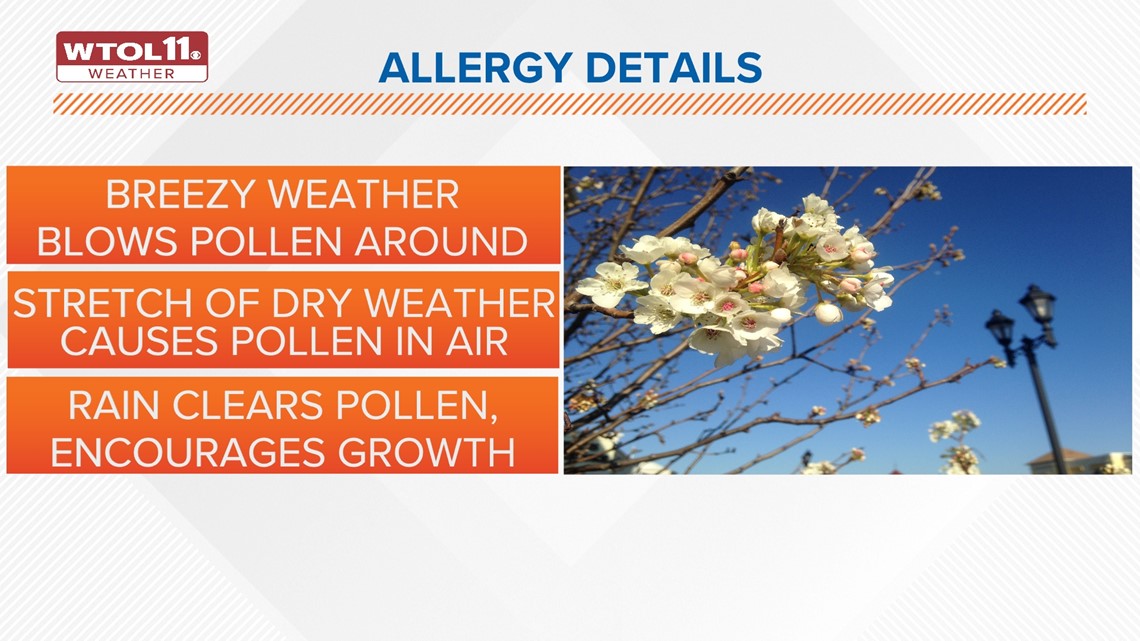
The catch with rain is it brings short term relief. Rain often brings nutrients and promotes growth in plants like grass and weeds. That new growth of plants can lead to another wave of elevated allergen levels.
Current pollen levels
Currently, tree pollen is the highest among all sources of seasonal allergens, which include ragweed and mold. Not all trees provide the same amount of pollen at the same time, either: currently, oak and mulberry specifically are the worst perpetrators of pollen.

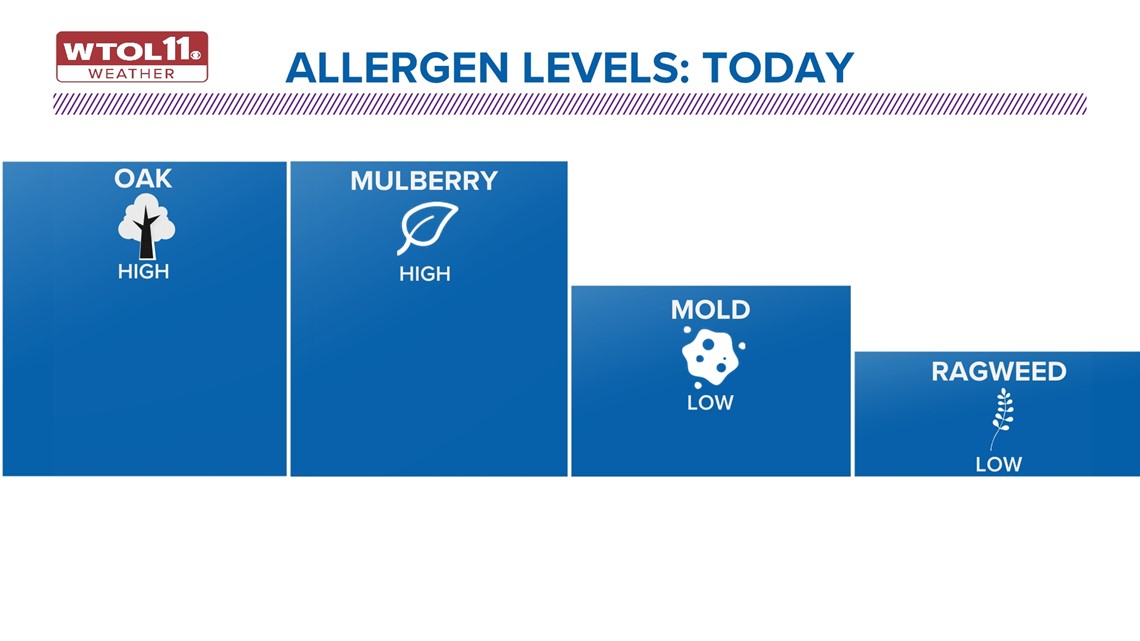
Meanwhile, mold and ragweed levels are both on the lower end.

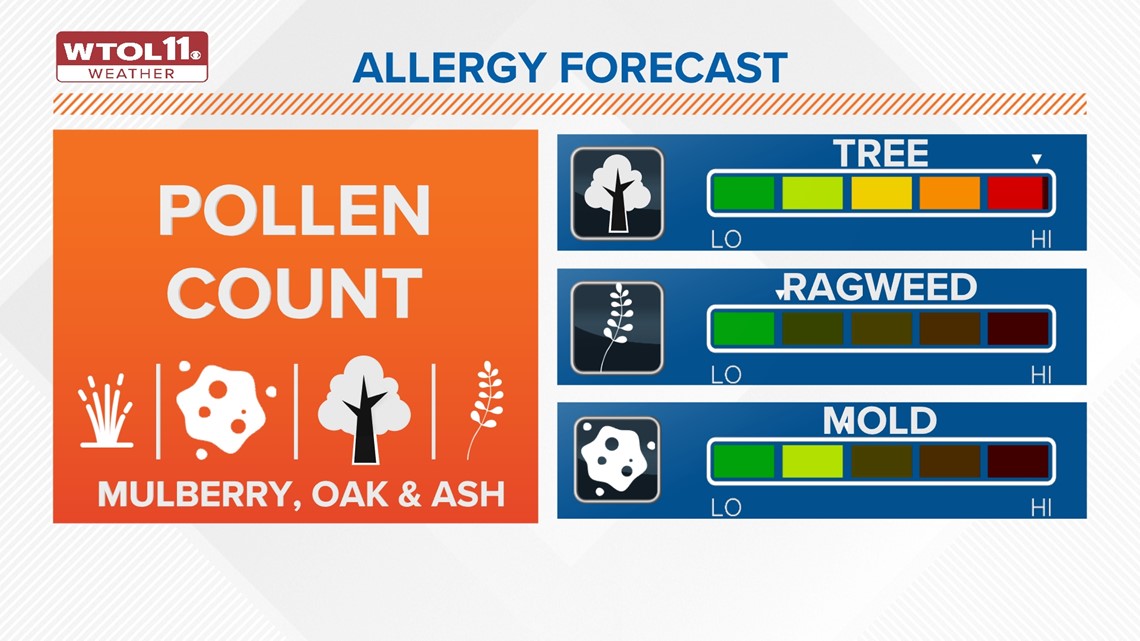
According to Dr. Safadi, a northwest Ohio allergist, pollen counts from trees have been categorized as "high" and "very high" since April 29: at the time of this writing, that's 16 days straight of high tree pollen.
Fortunately, the allergy forecast indicates some slight relief in the coming days.

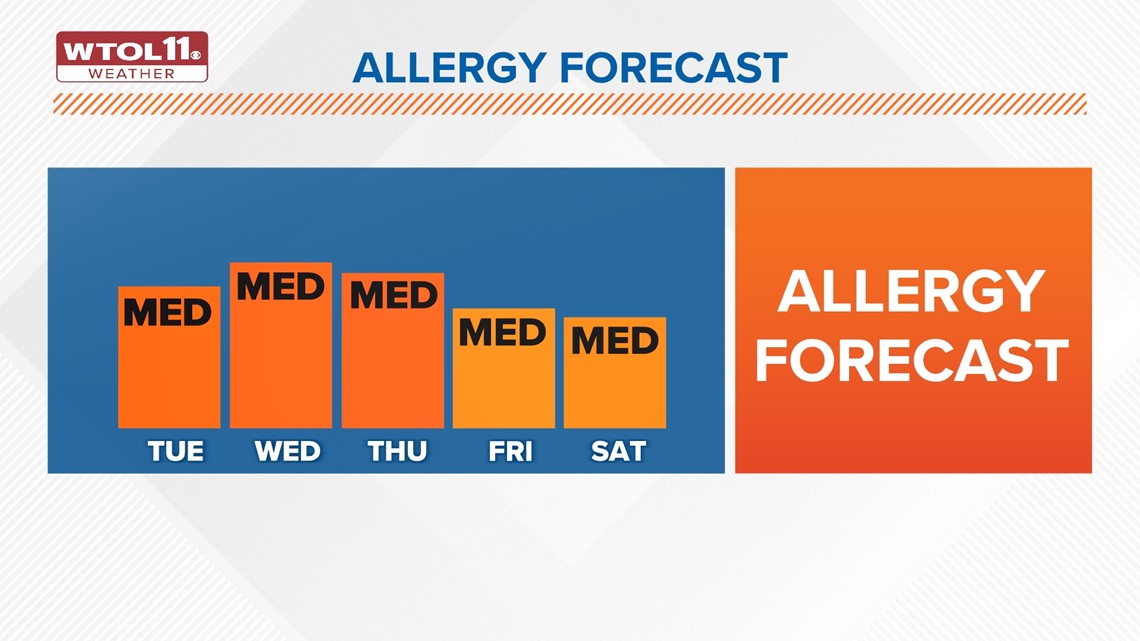
Climatology and pollen
An extended growing season, caused by increasing global temperatures, can worsen the severity of allergies. According to the National Phenology Network, which tracks seasonal patterns and cycles, the first leaves of 2023 in northwest Ohio were mostly on-time, if not slightly early, ranging from one day late to five or six days early. In Port Clinton specifically and in areas closer to central Ohio, however, leaves were as many as 10 to 15 days early.
Leaf-out dates vary from year to year, but available data indicate leaves are budding earlier: since 1981, three of the six earliest leaf-out dates in Toledo have occurred in the last 10 years.

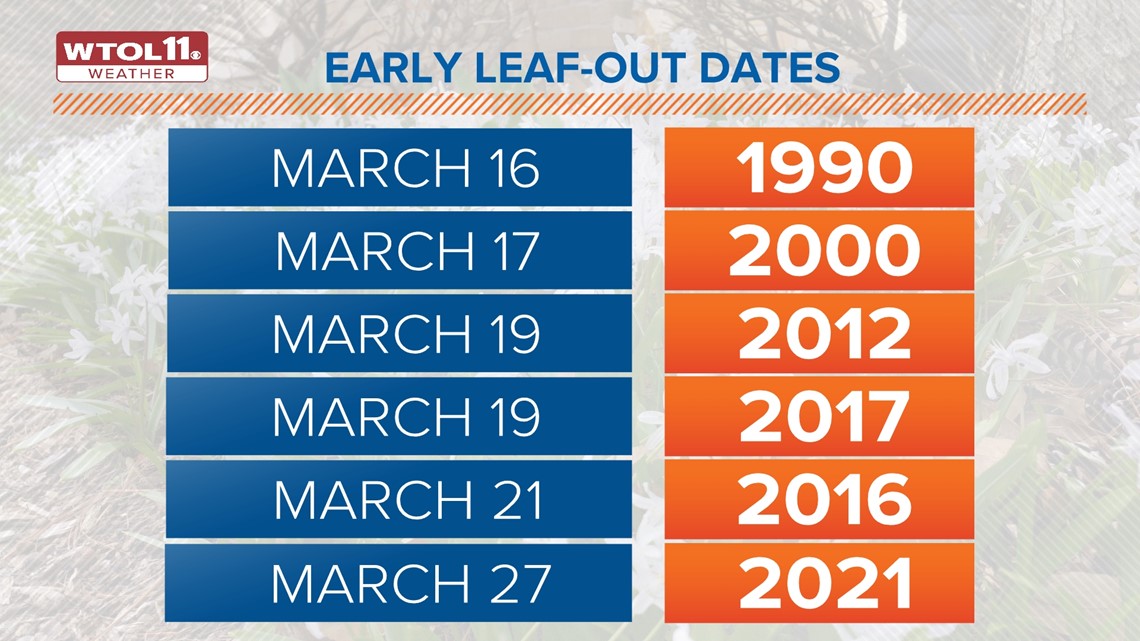
You can read more about climatology, climate change and pollen levels here.
MORE FROM WTOL 11

